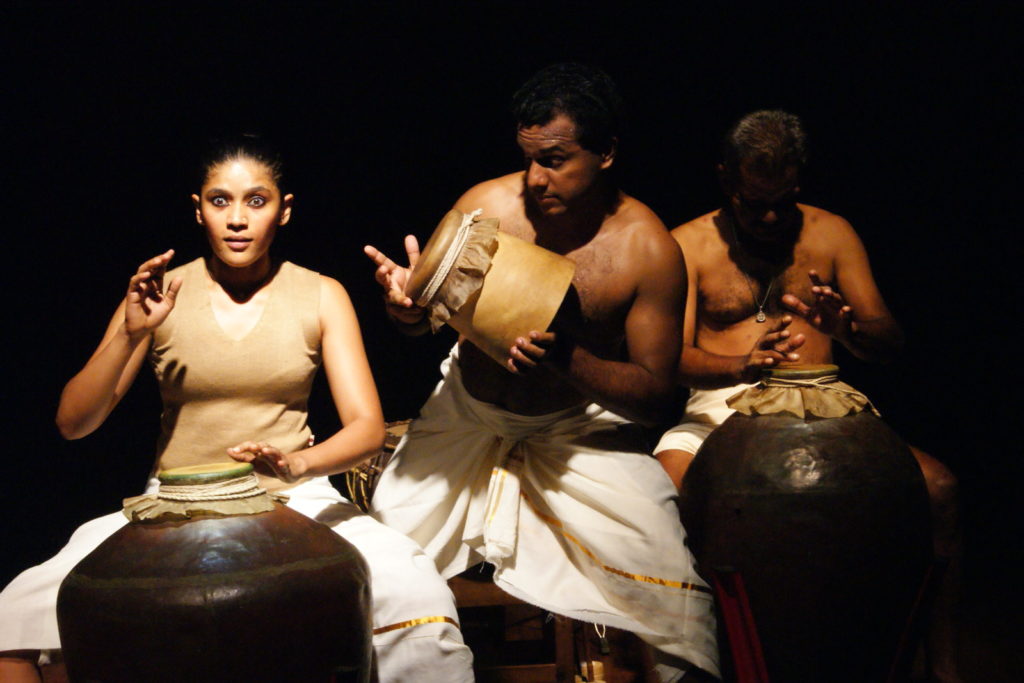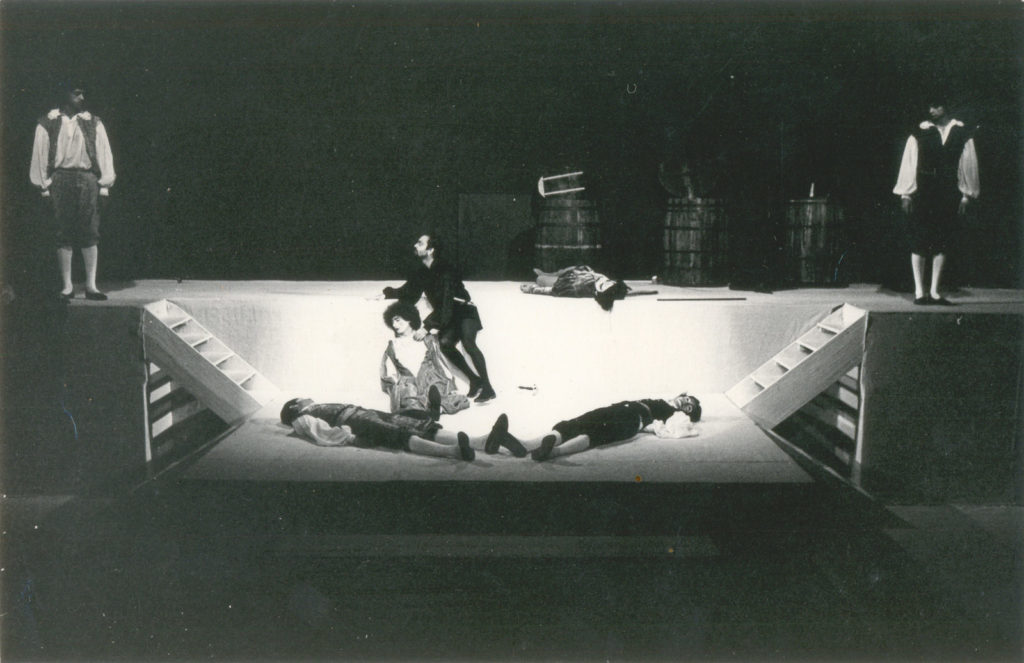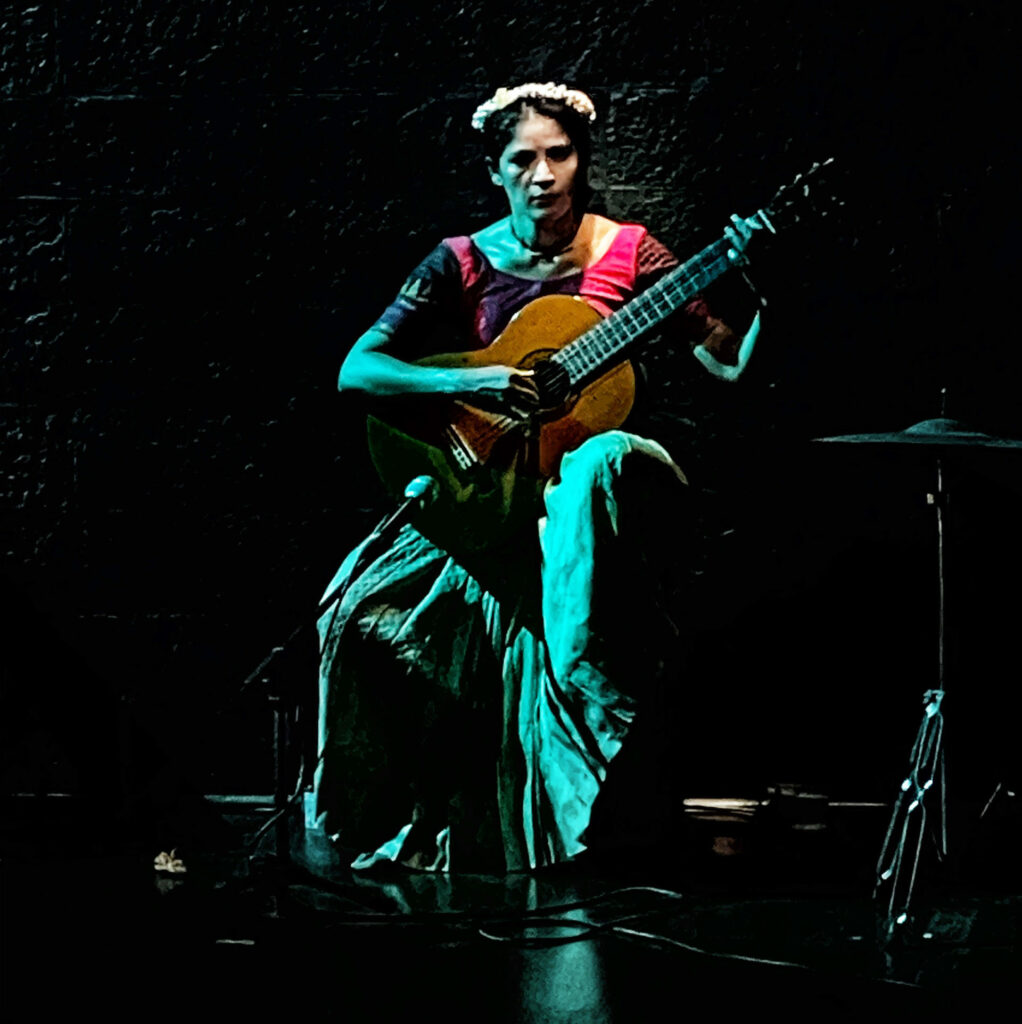Our Productions
Adishakti productions vividly bring together dance, movement and emotional craft, integrated into one performance language. They are all the result of intensive research into traditional arts and their reinterpretation with a contemporary aesthetic. After starting with pre-written scripts, Adishakti has been generating its own material, applying research to forge a hybrid, contemporary culture.
Kumbakarna and Lakshmana, are connected by boons that dramatically alter their cycles of sleep and wakefulness. Read more
The heroic status of Bhima depends largely on his physical prowess. Impressions of Bhima is a deconstruction of this hero. Read more
In The Tenth Head, the ten heads of Ravana become a metaphor for the tension that exists between the individual Read more
Adishakti’s The Hare and the Tortoise is a dramatic meditation on the ethical possibilities inherent in the notion of contemporaneity. Read more
One of the early experiments with finding new expressions to the text, Veenapani has explored the dance form Mayurbanj chau Read more
In this adaptation of Sri Aurobindo’s Savitri, Veenapani explores the epic struggle between Savitri and Death, in which she asks Read more
The inhabitants of a town turn into rhinoceroses; ultimately the only human who does not succumb to this mass metamorphosis Read more
Here theatre itself became a brilliantly sustainable metaphor for life; the problems of identity, and ambiguity, uncertainity and death. Read more















